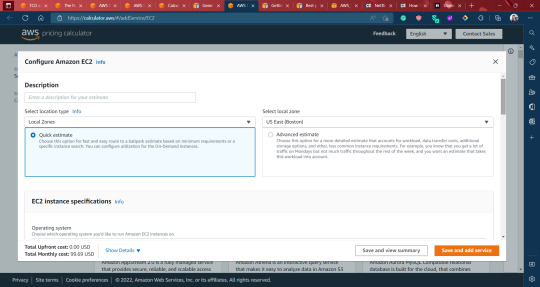#5GC
Text
Why mmWave hasn't become the mainstream spectrum of 5G?
In a previous article of IPLOOK, we introduced what 5G mmWave (5G mmWave) is. Due to its wide bandwidth, abundant resources, and high frequency characteristics, 5G mmWave has significant advantages and was once considered a key frequency band for development in the early stages of 5G. However, today, although many countries and regions around the world have promoted or deployed 5G mmWave, the application of mmWave technology in the industry still faces uncertainties and challenges.
At the beginning of 2023, due to various factors, the construction progress of 5G mmWave base stations in South Korea was far behind expectations, with completion rates only ranging from 10.6% to 12.5%. In Japan, NTT DOCOMO and Rakuten Mobile experienced no growth in mmWave users, and their traffic share was relatively low. Even in the US, which began deploying 5G mmWave ahead of other countries in 2019, the availability of 5G mmWave networks is less than 1%.
Many people believe that the reason why 5G mmWave has not become the mainstream spectrum for 5G is because of its own characteristics and the unclear application demands:
Limited Range: leading to high cost
The mmWave has a small coverage radius, and the construction and operation costs for the same coverage area are high, which hinders large-scale deployment. As a result of its high frequency and large transmission loss, the mmWave has poor coverage ability, with a coverage radius of only about 150 meters for a single mmWave base station, which is only 1/5 of the coverage radius of low-frequency bands such as Sub-6. If a continuous coverage 5G mmWave network is to be built like in the 3.5GHz frequency band, the number of base stations needed would be more than twenty times greater than that of regular 5G base stations, leading to high construction costs.
Poor Penetration: resulting in poor user experience
5G mmWave has poor penetration capability and severe diffuse attenuation, resulting in poor user experience and customer dissatisfaction. There are two main reasons for this. First, the mmWave has a short wavelength (between 1-10 mm), making it poorly penetrating, as it can be blocked by leaves and water droplets. Second, the mmWave is sensitive to the surface of objects, easily causing signal energy to dissipate in multiple directions, resulting in poor signal reception at the receiving end and affecting user experience. For example, even though over 20,000 mmWave base stations have been built in Japan, customers are reluctant to pay for mmWave services due to prominent problems such as frequent signal interruptions and insufficient coverage during usage.
Lack of Groundbreaking Apps
Low-frequency mmWave has clear bandwidth advantages, but due to the lack of groundbreaking applications, its value is difficult to fully unleash in the short term. Globally, mid-to-low frequency spectrum resources are gradually becoming scarce, and more reliance is placed on spectrum re-farming and frequency coordination to solve this issue. In contrast, 5G mmWave, with its continuous and wide spectrum resources, can better achieve bandwidth capacity enhancement. However, by reason of the unclear promotion of large-scale applications such as XR and Smart Homes, and traditional video services can be satisfied with existing bandwidth, the short-term demand for mmWave is not significant.
3 notes
·
View notes
Text
Die Marktforschungsstudie zu 5G-Kernnetz (5GC) Markt – Globale Branchenanalyse, Marktgröße, Chancen und Prognose, 2022 - 2030, bietet einen detaillierten Einblick in den globalen 5G-Kernnetz (5GC) Markt, der Einblicke in seine verschiedenen Marktsegmente beinhaltet. Marktdynamik mit Treibern, Beschränkungen und Chancen mit ihren Auswirkungen werden im Bericht bereitgestellt. Der Bericht bietet Einblicke in den globalen 5G-Kernnetz (5GC)-Markt, seine Art, Anwendung und wichtigsten geografischen Regionen. Der Bericht behandelt grundlegende Entwicklungsrichtlinien und Layouts von Technologieentwicklungsprozessen.
0 notes
Photo

Utah License Plate W38 5GC
0 notes
Text



A set of three green recolors of the Tassel is now available for sale!
They're 5GC + 2300SC or 10GC each!
All are available for all three adult poses and were sponsored by SalemSkies 💚
27 notes
·
View notes
Text
The Evolution of Core Networks: Embracing 5G Technology
The evolution of core networks has been a fascinating journey marked by advancements in telecommunications technology, with a significant leap forward being the integration of 5G technology. Core networks play a pivotal role in facilitating communication between devices, enabling seamless connectivity and supporting a wide range of applications.
The transition from 4G to 5G represents a paradigm shift in core network architecture. 5G technology promises enhanced data speeds, lower latency, and increased network capacity, revolutionizing the way we connect and communicate. The core network, often referred to as the backbone of telecommunications infrastructure, is at the forefront of this transformation.
One key aspect of the evolution is the move towards a more virtualized and software-defined core network. This shift allows for greater flexibility and scalability, enabling operators to adapt to dynamic demands efficiently. Network Function Virtualization (NFV) and Software-Defined Networking (SDN) are integral components in this evolution, empowering operators to optimize resource utilization and provide a more responsive and agile network.
The advent of 5G brings with it new architectural concepts such as the 5G Core (5GC), designed to meet the diverse requirements of modern communication services. The 5GC introduces service-based architecture, enabling the deployment of network functions as modular services, fostering innovation and rapid development.
Moreover, edge computing is becoming increasingly intertwined with core networks in the 5G era. By bringing computation and storage closer to the end-user or device, edge computing reduces latency and enhances the overall user experience. This integration is crucial for supporting emerging technologies like the Internet of Things (IoT), autonomous vehicles, and augmented reality.
Security is another critical aspect of the evolving core networks. As the attack surface expands with the proliferation of connected devices, implementing robust security measures becomes imperative. The 5G core incorporates advanced security mechanisms, including network slicing and secure access mechanisms, to safeguard communications and data.
In conclusion, the evolution of core networks, particularly with the integration of 5G technology, signifies a transformative era in telecommunications. The move towards virtualization, software-defined architectures, and the adoption of 5G core principles paves the way for a more responsive, efficient, and secure communication infrastructure. This evolution not only meets the demands of current connectivity needs but also lays the foundation for future innovations and technologies.
0 notes
Text
Haii wolvden friends! I’m looking to do art for some gcs so I’m offering to do a headshot for 5gc my examples are here: https://toyhou.se/18926011.art-examples/18926019.sketched I’m willing to draw either your wolf (which I will probably have to simplify heavily) or just your random oc! Just dm me if interested!
0 notes
Text
Telecom Digital BSS Advantages in the Era of 5G
5G networks are anticipated to deliver a transformational customer experience with improved speed, connectivity, network coverage, interoperability, and more. This will be further enhanced with omnichannel support, which offers a highly personalized, consistent, seamless, and holistic view of the complete customer journey. Enabling faster speeds and connectivity, rapid service creation and monetization, and differentiated partnership models for new revenue streams will be a necessity for operators. Those ready with 5G Core (5GC) architecture before the 5G market matures will have a competitive edge. It provides a high level of orchestration and automation with the use of a modular 5G service-based architecture (SBA) required to meet future challenges and business needs. An effective telecom digital BSS helps to fully monetize this transformation and derive maximum ROI.
How does a telecom digital BSS platform unlock 5G potential?
With limited features and rigid architecture, legacy BSS cannot keep up with the evolving demands of customers as they embrace a digital lifestyle. With a digital BSS solution for CSPs, operators can seize the benefits of 5G – a fact they are well aware of. According to this report, the global telecom digital BSS market is expected to reach approximately USD 7,416 million by 2025, at a CAGR of roughly 15% between 2019 and 2025.
A digital BSS for telecom provides an elastic, modern, and convergent system in a virtualized network environment, giving telecom operators an edge over competitors and enabling them to readily offer unique 5G services. Effective business support system transformations help modernize fixed and wireless networks, as well as support CSPs to introduce differentiated services and automate business processes.
What should telecom operators look for in a telecom digital BSS platform?
5G facilitates real-time rating, metering, and charging for sophisticated digital services, along with monetization schemes such as QoS tiers, OTT billing and charging, partner settlements (B2B2X), and more – all of which is possible only with flexible and agile digital BSS solutions. Robust digital BSS architecture using the latest 5G standards is essential in this competitive and ever-evolving market – today and well into the future – to be able to support a dynamic environment and provide quick time-to-value in delivering new features and functions.
Top benefits telecom operators enjoy with digital BSS
Modern digital BSS features help improve and monetize legacy as well as next-gen networks, driving the following benefits for operators:
1. Rapid and phased deployments
A truly modern digital BSS platform for telcos is modular, cloud-native, and deployed virtually. For telecom operators not wanting to undertake complete digital transformations at one go, it’s possible to implement in phases, so there is low risk involved in migration and fewer resources are required to launch it. Further, End of Life is less frequent, and the hardware is much easier to manage.
2. Accelerated monetization of use-cases
A 5G-ready digital BSS stack lets telecom operators rapidly monetize the data network with innovative and personalized offerings, enhancing the digital experience for subscribers and improving customer loyalty. The elastic and convergent platform provides a network environment for CRM, convergent charging, and billing, with REST APIs that offer the flexibility to quickly introduce a host of digital services with new billing models.
3. Centralized catalog management
With 5G, network slicing, and the surge of IoT platforms for telecom and other data-intensive services like AI and VR, it will be challenging for CSPs to meet the demands to support new business models and use cases on the fly without expensive and lengthy backend code changes. A digital BSS stack with a centralized product catalog enables telecom operators to swiftly respond to this network evolution. A common product repository and robust API framework allow CSPs, partners, and distributors to accelerate TTM for new products and services and improve revenue and customer engagement. With modern centralized catalogs, plans can be defined by many metrics such as volume, value, time, and quality of service. This core functionality helps ease teamwork and collaboration, manage offers efficiently, support multi-play offerings, and provide quick access to the prebuilt use cases library.
4. Improved customer management
Customer relationship management covers all important aspects of the customer lifecycle, from registration and hierarchy to offering a 360-degree view of CSRs for subscribers as well as enterprise customers. With digital CRM, operators can implement automated workflows, streamline sales and support, and use chatbots and AI to reduce manual CSR workload. Additionally, it enables instant issue redressal and quick troubleshooting with web and mobile self-care including live chat options, lowering operational expenses and reducing churn.
5. Efficient revenue management
CSPs need real-time billing and policy control capabilities to seize and monetize opportunities that all IP networks bring. Convergent charging facilitates automated rates and charging mechanisms. Further, revenue management solutions with reliable interconnect and billing for roaming help manage diverse partnerships, enabling telecom operators to efficiently charge other operators for the use of their voice, data, SMS, and other network infrastructure. A modern telecom digital BSS solution with real-time APIs can also facilitate new 5G use cases like surge or congestion charging at times when the demand for digital services is high.
6. Enhanced partner management
A digital BSS stack with an integrated partner management platform helps improve operational agility by streamlining the partner lifecycle. It helps cultivate relationships with simplified onboarding, self-service, and support for a host of partner functions such as content, OTT, IoT, interconnect agreements, roaming, MVNO, and others. A partner management solution with open API integration works seamlessly with third-party systems.
7. Automated omnichannel support
Improving customer experience is not merely about providing better user interfaces on various devices, but also integrating the process across channels. Omnichannel support allows operators to provide a consistent, seamless, and highly personalized self-care experience through the web, mobile, and social media platforms, ensuring swift problem resolution while making customers feel more connected and valued. The most recent additions to this trend are WhatsApp, AI, and NLP-powered chatbots for instant redressal of customer queries.
Telecom operators are already in the battle to build 5G networks and intend to offer improved quality of service to customers. As they invest billions of dollars in 5G RAN, they must remember that an effective 5G strategy includes IT systems to generate ROI on that investment. Digital BSS has the great benefit of being modular so it can be rolled out in phases, mitigating the risks involved in a large-scale migration of one’s billing system. To maximize their chances of success, operators must modernize their infrastructure with a digital BSS transformation today.
Interested in learning more about Canvas, a digital BSS platform from 6D Technologies? Please visit https://www.6dtechnologies.com/products-solutions/digital-bss-solutions
0 notes
Text
Space based 5G hosts Traditional in 5G

Space-based 5G: The final frontier for global connectivity
Could universal broadband be the 5G killer app we’ve been waiting for?
Terrestrial cellular networks’ lack of coverage can affect industry, business, and even individual safety when they need connectivity. 5G from space might make Internet connectivity universal for many use applications.
Qualcomm’s satellite communications innovation legacy
Qualcomm and Loral Corporation introduced Globalstar in 1991 after the 1988 success of OmniTRACS, a two way satellite mobile communications system for trucking and logistical organisations. Globalstar used CDMA technology and 48 low-earth-orbit (LEO) satellites to give global coverage to a wide range of devices.
Modern multi-mode satellite phones use various technology for terrestrial and proprietary satellite connectivity and are non-mainstream.
Qualcomm recognised the opportunity to improve the smartphone experience by combining terrestrial and satellite communication with one mass-adoption technical standard. This conviction led us to reorient 3GPP’s 5G standardisation effort towards satellite connectivity. Qualcomm Technologies spearheaded 5G Release 17 satellite communications R&D and continues to advance 5G Advanced satellite connection for end user devices and IoT.
3GPP Release 17: 5G Non-Terrestrial Networking begins
3GPP pursued a variety of 5G non-terrestrial networking (NTN) solutions for Release 17 based on platform type and use cases. HAPS, UAVs, and satellites in GEO/GSO, MEO, and LEO orbits are supported. Some platforms are immobile with non-steerable coverage, while others can move or have steerable coverage. Thus, Release 17 supports earth-fixed and earth-moving coverage beams.
Release 17 addresses the main issues with 5G connectivity with non-terrestrial platforms: extended propagation delays, moving cells, and big Doppler shifts from high-speed platforms. IMT-2020-Satellite candidate technologies IoT-NTN and NR-NTN offer these solutions in two 5G technologies for various use cases in Release 17.
5-G NR-NTN complements terrestrial networks in underserved areas including as rural areas and coverage gaps. While providing less capacity and data rates than a densely deployed terrestrial network, 5G NTN enables a ubiquitous 5G user experience with mobility between terrestrial and non-terrestrial coverage.
Rel-17 5G NR-NTN uses transparent bent-pipe satellites and the 5G Standalone (5G SA) architecture with a 5G gNB and 5GC core network to offer throughputs of 1 to 10 Mbps, or higher with extra spectrum. SMS, VoNR, and mobile broadband to smartphones and embedded devices, fixed wireless access, automotive and mobile compute connection, and satellite backhaul for faraway cell towers are 5G NR-NTN use cases.
5G IoT-NTN seeks to grow the vast IoT industry with non-terrestrial coverage. In transparent bent-pipe mode, satellites deliver 1–100 kbps to Rel-17 NB-IoT and eMTC devices. The bent-pipe architecture allows rapid deployment of new services over existing satellites for lower bandwidth services like NB-IoT by upgrading only the ground station and user device.
Base stations connected to ground stations and EPC core networks generate NB-IoT or eMTC carriers. Personal safety and messaging, environmental sensors, POS devices, utility metres, and logistics tracking are 5G IoT-NTN use cases. In isolated rural regions, shipping containers at sea, and other areas where terrestrial networks are not available, IoT-NTN can provide universal coverage for IoT devices.
3GPP Release 17 selected two radio channels for 5G NTN use, pending regional regulatory permissions. The L-band (1626.5–1660.5 MHz UL / 1525–1559 MHz DL) has 34+34 MHz FDD bandwidth, while the S-band (1980–2010 MHz UL / 2170–2200 MHz DL) has 30+30 MHz FDD bandwidth.
Mobile IoT-NTN and NR-NTN devices must enable GNSS location to pre-compensate for propagation delays and motion-related Doppler effects when communicating via satellite. Stationary devices can operate without GNSS if their location is accurately specified.
3GPP ecosystem grows to enable 5G NTN
Many satellite industry leaders have joined the 3GPP due to 5G’s vast capabilities and global scope. Airbus, CNES, ESA, Eutelsat, Hispasat, Hughes, Inmarsat, Intelsat, KT Sat, Leonardo, Lockheed Martin, and Thales are collaborating with 3GPP’s cellular ecosystem to develop 5G satellite communications (satcom).
Qualcomm, Ericsson, and Thales researched, tested, and validated 5G NTN. This partnership produced a revolutionary on-the-ground end-to-end solution for the 5G NR-NTN vision, including emulators for realistic NTN channels’ radio propagation and time delays. Qualcomm Technologies‘ mobile test platform (MTP) validated the 5G NTN smartphone form-factor, Thales’ 5G radio satellite payload for LEO satellites, and Ericsson’s 5G vRAN prototype and core network. The successful live demonstration of this system at MWC Barcelona 2023 was a key step towards commercialising 5G NR-NTN.
Qualcomm Technologies and Skylo, a 5G NTN service provider, unveiled new 5G IoT-NTN modems that allow ultra-low power and improved connectivity for IoT devices across satellite and cellular networks. Qualcomm Aware enables real-time asset tracking and device management in remote places for essential decision-making on both chipsets.
5G Advanced: NTN app and performance improvements
As part of the 5G development programme, 5G Advanced will refine 5G NTN starting with 3GPP Release 18 (mid-2024). For Release 18, systemic improvements include control channel and reference signal enhancements, discontinuous coverage support, higher performance with very small aperture terminals (VSAT), and service continuity and mobility improvements for better transitions between non-terrestrial and terrestrial coverage areas.
Rel-18 5G NR-NTN will support NTN frequency ranges above 10 GHz, such as the Ka band, for larger carrier bandwidths and network capabilities. The US FCC will consider bands n510 (27.5–28.35 GHz UL / 17.7–20.2 GHz DL) and n511 (28.35–30.0 GHz UL / 17.7–20.2 GHz DL). For the EU, CEPT will propose band n512 (27.5–30.0 GHz UL / 17.7–20.2 GHz DL). Note that these additional bands target VSATs and other devices with larger antennas or arrays, not smartphones.
In positioning, the 3GPP is working to reduce GNSS dependence for NTN use cases and add network verification of device location with multi-RTT measurements.
Developing satellite communications for commercial success
Previous attempts to bring satellite communications to the masses lacked a single technology standard that could help mobile network operators and satellite connectivity service providers worldwide complement each other’s networks for ubiquitous connectivity with affordable and popular devices. The 3GPP ecosystem’s momentum, the 3GPP technology evolution plan, and 5G NTN’s vast application cases can only help the value proposition succeed commercially.
0 notes
Text

Event: Healing Talk Session - August 19, 2023 https://www.blaqsbi.com/5gCS
0 notes
Text
hbd Charlie spring!! #heartstopper #charliespring #joelocke #shorts
via YouTube https://www.youtube.com/watch?v=ifpC7b--5gc
0 notes
Text
5G RAN Slicing - Training Video
Check our complete 5GC Course with certification

View On WordPress
0 notes
Text
6G: A Cloud-Centric Wireless Future

As the stage where 6G communication is regarded as the futuristic technology that lay out possibilities, more use cases and new generation of cellular communication standards spring up. Zhang Ping, an Academician of Chinese Academy of Engineering, stated that the future 6G would be technology combined with communication, computing, perceiving, AI, and security. Wireless cloud solutions are the most suitable for 6G development.
The Power of Cloud
Cloud-managed wireless market shows the future growth potential in the latest released study. 6G is a cloud-centric wireless future. Cloud is a new economics and a new supply chain.
The open cloud wireless network can better meet the needs of 6G multi-dimensional networking. Additionally, the cloud system gets rid of the traditional software and hardware form to redefine “wireless network”. It opens up more options for operators and integrators to deploy new EPC and 5GC network.
However, there is always the other side of the coin.
Challenges and Possibilities
Up until now, multiple challenges still exist in 6G wireless. It’s concentrated on the MCPTT and security system solutions. While there is certainly an appeal to 6G Implementations, especially for enterprises, colleges and laboratories, we still need to figure out how to solve related challenges: how to ensure the quality of services, how to better integrate with all 6G capabilities, how to design a reasonable network architecture, alike problems.
Moving to open cloud wireless is going to require 6G. The world where the network becomes multimode through a cloud player, is the world where 6G technology features at industrial and ecological clusters. Cloud wireless network becomes a popular trend, which will definitely usher a new supply chain.
IPLOOK's Step into “Cloud”
IPLOOK core network has successfully deployed on Alibaba Cloud, Tencent Cloud, AWS Cloud alike cloud platforms, providing carrier-grade end-to-end mobile network solutions for operators and enterprises.
The network deployment on cloud enables customers to rapidly obtain core network with lower CAPEX, and also simplifies the management, achieving rapid start-up of the core network business.
Contact us for more info!
5 notes
·
View notes
Text
How does AWS TCO Analysis work?
Irrespective of your business size, you can’t ignore the value assessment of any product or service you plan to purchase. The right investment in the right system, process, and infrastructure is essential for success in your business. And how can you make the right financial decisions and understand whether “X” product/service is generating value or not for your business?
Total Cost of Ownership or TCO analysis is one method that can help you in this situation, especially if you are planning to analyze these costs on the cloud. Amazon’s AWS is a leading public cloud platform offering over 200 fully featured services, including AWS TCO analysis -a service to analyze the total costs of an asset or infrastructure on the cloud. It offers services to diverse customers – startups, government agencies, and the largest enterprises. Its agility, innovation, safety, and several data centers make it comprehensive and adaptable.
Read on to learn more about the TCO analysis and how AWS TCO analysis works.
What is TCO analysis?
As the name suggests, TCO estimates costs associated with purchasing, deploying, operating, and maintaining any asset. The asset could be physical or virtual products, services, or tools. The TCO analysis’s primary purpose is to assess the asset’s cost throughout its life cycle and to determine the return on investment.
Regarding the IT industry, TCO analysis consists of costs related to hardware/software acquisition, end-user expenses, training, network, servers, and communications. According to Gartner, “TCO is a comprehensive assessment of IT or other costs across enterprise boundaries over time.”
TCO analysis in Cloud
The adoption of cloud computing in business also raises the trend of TCO analysis on the cloud. You can call it, cloud TCO analysis, which performs the same job on the cloud. TCO analysis in the cloud calculated the total costs of adopting, executing, and provisioning cloud infrastructure. When you are planning to migrate to the cloud, this analysis helps you to weigh the current costs and cloud adoption costs. Not only Amazon, but other big tech giants, including Microsoft, Google, IBM, and many more, offering TCO analysis in the cloud. But, Amazon’s AWS is the number one cloud service provider to offer cloud services.
Why do businesses need AWS TCO analysis?
A TCO analysis helps to know whether there will be profit or loss.
Let’s understand it with an example showing how AWS TCO analysis helped the company increase its profit. The top OTT platform, Netflix, invested $9.6 million per month in AWS Cost in 2019, which would increase by 2023. According to this resource, it would be around $27.78 million per month. The biggest reason behind this investment is the profit, and AWS TCO analysis is helping them to know how this profit is happening. AWS helped Netflix to get a cost-effective and scalable cloud architecture horizontally. It also enabled the company to focus on its core business – video streaming services. You all know that Netflix is the favorite video streaming platform globally.
In another example, delaying the decision of TCO analysis ignorance resulted in a loss. According to this report on 5GC, TCO analysis has been done regarding the adoption of the 5G core. It has been found that postponing increases the TCO over five years. It indicates the losses occurred due to ignorance of TCO analysis.
These examples show that your business needs both TCO analysis and cloud infrastructure. A lack of TCO analysis might cause incorrect IT budget calculations or purchasing of inappropriate resources. It might result in problems like downtime and slower business operations. You can understand that the TCO analysis is a critical business operation. Its ignorance directly impacts financial decisions. Thus, know this and utilize AWS TCO analysis for your business success.
How does AWS TCO Analysis work?
AWS TCO analysis refers to calculating the direct and indirect costs associated with migrating, hosting, running, and maintaining IT infrastructure on the AWS cloud. It assesses all the costs of using AWS resources and compares the outcome to the TCO of an alternative cloud or on-premises platform.
AWS TCO Analysis is not a calculation of one resource or a one-step process. To understand how it works, you need to know the costs of your current IT infrastructure, understand cost factors, and how to optimize cloud costs when you deploy and manage scalable web applications or infrastructure hosted on-premises versus when you deploy them on the cloud.
Here are steps to help you understand how AWS TCO analysis works:
Preliminary steps – Know the current value and build a strategy
Step 1 – Evaluate your existing infrastructure/ web application cost
You must calculate and analyze the direct and indirect costs of your existing on-premise IT infrastructure. Perform the TCO analysis of this infrastructure, including various components.
Physical & virtual servers: They are the main pillars in developing the infrastructure
Storage mediums: Cost of database, disks, or other storage devices
Software & Applications: The analysis finds the cost of software and its constant upgrades. It also estimates the costs of acquiring licenses, subscriptions, loyalties, and vendor fees
Data centers: The analysis needs to check the costs of all linked equipment such as physical space, power, cooking, and racks with the data centers
Human Capital: Trainers, consultants, and people who run setups.
Networking & Security system: Find out the costs of these critical components
Don’t limit yourself to estimating only direct/indirect costs. Find out any hidden costs that might happen due to unplanned events like downtime and opportunity costs, which might be helpful in the future.
Step 2 – Build an appropriate cloud migration strategy
You must choose an appropriate AWS cloud migration strategy before calculating monthly AWS costs. Amazon offers many TCO analysis migration tools, such as CloudChomp CC Analyzer, Cloudamize, Migration Evaluators, etc., from AWS and AWS partners. It can help you to evaluate the existing environment, determine workloads, and plan the AWS migration. It provides excellent insights regarding the costs, which can help you to make quick and effective decisions for migration to AWS.
Primary step – Estimate AWS Cost
Know these cost factors
All industries have different objectives and business operations. Thus, their cost analysis differs according to AWS services, workloads, servers, or methods of purchasing other AWS resources., the cost depends on the working usage of services and resources.
Still, you must consider the following factors directly impacting your AWS costs.
Services you utilize: AWS offers various computing services, resources, and instances with hourly charges. It will bill you from when you launch any resource/instance until termination. You will get other options to use predetermined set costs for making reservations.
Data Transfer: AWS charges for aggregated outbound data transfer across services according to a set rate. AWS does not charge for inbound or inter-service data transfer within a specific region. Still, you must check data transfer costs before launching.
Storage: AWS charges for each GB of data storage. As per consumed storage classes, you need to understand the cost analysis. Remember that cold and hot storage options are available, but hot storage is expensive and accessible.
Resource consumption model: You get options to consume resources. Such as on-demand instances, reserved instances that give discounted prepay options for on-demand instances, and AWS saving plans.
Know how to use AWS Pricing Calculator
Once you analyze your compute resources and infrastructure to deploy, understand these factors, and decide on necessary AWS resources, you need to use AWS Pricing Calculator for expected cost estimation. This tool helps determine the total ownership cost. It is a web service that is freely available to end-users. It permits you to explore services according to need and estimate costs.
Look at the below image to see how this calculator works. You have to add required services, configure them by providing details, and see the generated costs.

Credit: Amazon AWS Pricing Calculator
You can easily add the prices according to a group of services or individual services. After adding to the calculator, check the following snap-shot of the configuration service (EC2 service). You have to provide all required information such as location type, operating system, instance type, memory, pricing models, storage, and many more.

Credit: Amazon AWS Pricing Calculator
The best part is that you can download and share the results for further analysis. The following image is a dummy report to know that you can estimate the monthly cost, budget, and other factors with this summary.

Credit: Amazon AWS Pricing Calculator
Note: Check this link to know various factors for pricing assumptions.
Know how to optimize cloud costs on AWS
Calculation on AWS is not sufficient; you need to optimize your cost estimation. AWS offers various cost optimization options to manage, monitor, and optimize costs. Here are some tools you can utilize to optimize your costs on AWS:Tool nameKey CharacteristicsAWS Trusted Advisor
Get recommendations from this tool to follow the AWS best practices to improve performance, security, & fault tolerance
Can help you to optimize your cloud deployment through context-driven recommendation
AWS Cost Explorer
Provide you with an interface to check, visualize, and manage AWS costs and usages over time
Features like filtering, grouping, and reporting can help you to manage costs efficiently
AWS Budgets
Use this tool to track your costs and improve them for better budget planning and controlling
You can also create custom actions that help prevent overages, inefficient resource usage, or lack of coverage
AWS Costs & Usages Report
Leverage this tool to track your savings, costs, and cost drivers.
You can easily integrate this report with an analytics report to get deep analysis
It can help you to learn cost anomalies and trends in your bills
How Airbnb used AWS Cost & Usage Report for AWS cost optimization
A community marketplace, Airbnb, based in San Francisco founded in 2008. The community has over 7 million accommodations and over 40,000 customers. In 2016, Airbnb decided to migrate all operations to AWS to scale their infrastructure automatically. It worked, and in just 3 years, the company grew significantly and reduced its expenses through different AWS services (Amazon EC2, Amazon S3, Amazon EMR, etc). In 2021, the company utilized the tools, AWS cost & usage report, saving plans, and actional data to optimize their AWS costs. The outcome: 27% reduced storage costs; 60% reduced Amazon Open Search Service cost.
The company has developed a customized cost and usage data tool through AWS services. It is helping them to reduce costs and deliver actional business metrics.
Final Stage: Avoid these mistakes
Often, businesses make mistakes like misconfiguration, choosing the wrong resource, etc., leading to increased costs. Check the following points to avoid mistakes:
Never create or set up cloud resources without using auto-scaling options or other monitoring tools. It happens during Dev/test environments mostly.
Take care while configuring storage resources, classes, and data types. Often, misconfiguration happens during storage tiers usage, such as Simple Storage Service (S3).
Avoid over-provisioned resources by properly consolidating them. You must know the concept of right-sizing to find the perfect match between instance types, sizes, and capacity requirements at a minimal cost.
Choose a pricing plan carefully based on your infrastructure requirements. This mistake can cost you an expensive cloud deployment.
Never ignore the newer technologies, as they can reduce your cloud spending and helps in increasing productivity in work.
Closing Thought
The report is proof to know that AWS helps businesses in cost savings up to 80% over the equivalent on-premises options. It lowers costs and allows companies to use savings for innovation. So, what are you waiting for, plan to migrate your on-premise IT infrastructure to the AWS cloud, calculate costs by following the steps, and optimize it by preventing typical mistakes?
Managing your IT infrastructure’s overall direct and indirect costs requires time and process. TCO analysis for a cloud migration project is a daunting job. But, AWS TCO analysis makes this complex process easy. Take advantage of this analysis and determine your cloud migration project cost.
#AWS#awstraining#aws associate#awsmigration#computing#cloud blogs#cloud development#cloud migration#cloud computing#cloud app development
0 notes
Note
https://youtu.be/TglXesT-5Gc <- song for u I hope u like it (loud warning)
Oooo it’s not what I normally listen to but it’s pretty good! Ty, Inky!
1 note
·
View note
Text


The Tassels are here!
These new Custom Decors are available for all adult poses for 10GC or 5GC + 2,300SC. Recolors' names will listed at the bottom of the post.


Black & Gold trim: Nightstalker Tassel
Brown & Gold trim: Cliffwalker Tassel
Tan & Red trim: Sandwastes Tassel
Yellow & Gold trim: Sunchaser Tassel
Sky blue & Indigo trim: Frostbreather Tassel
Deep blue & Silver trim: Moonhowler Tassel
Purple & Dark violet trim: Dreamwalker Tassel
34 notes
·
View notes
Text
夫の実家に行くことになり、事前にお寿司等用意していきますと言っておいた。それなのに義母がなんと・・・
43: 修羅場まとめ速報 2016/09/19(月) 09:42:41.44 ID:5GC+2HKv
今日夫の実家に行くことになってて、 事前にお寿司やらなんやら用意していきますって言っておいたのに さっき電話があって「ご飯も炊いたしおかずも用意したから何も持ってこなくていいのよ」 って言ってきたんだけど、もう予約してあんだよね…
正月と義父の誕生日にも同じようなことやられたから念押ししといたんだけどなあ… 夫の好物を一杯作って食べさせたいんだってさ 何か萎えたから今日は私は行かないわ、って言ったら夫が焦ってるけどもう知らん 予約してる料理も知らん
続きを読む
夫の実家に行くことになり、事前にお寿司等用意していきますと言っておいた。それなのに義母がなんと・・・
Source: 修羅場まとめ速報

View On WordPress
0 notes